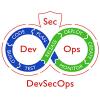Strategic advice to leverage new technologies
Technology is at the heart of nearly every enterprise, enabling new business models and strategies, and serving as the catalyst to industry convergence. Leveraging the right technology can improve business outcomes, providing intelligence and insights that help you make more informed and accurate decisions. From finding patterns in data through data science, to curating relevant insights with data analytics, to the predictive abilities and innumerable applications of AI, to solving challenging business problems with ML, NLP, and knowledge graphs, technology has brought decision-making to a more intelligent level. Keep pace with the technology trends, opportunities, applications, and real-world use cases that will move your organization closer to its transformation and business goals.
Recently Published
SAP HANA for Maximum Competitive Advantage
Most analytics solutions designers today are using 30-year-old mental models around scarcity of compute and are thus crippling their designs, not fully realizing how radically different 21st-century analytics has become. The recent leap forward in database and analytics technology includes streaming technologies like Apache’s Kafka, which can handle real time and can scale to handle big data movement at extremely low cost; and high-speed, in memory analytics tools like SAP HANA, which makes mincemeat out of billion-row data sets.






















